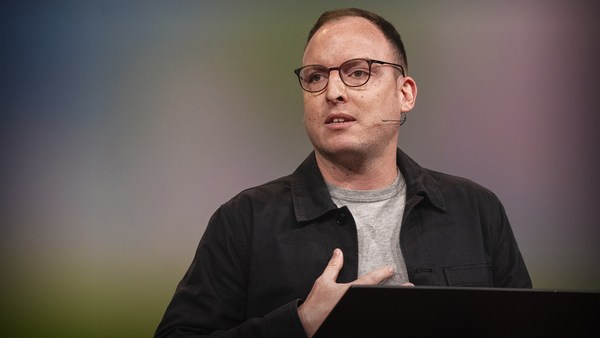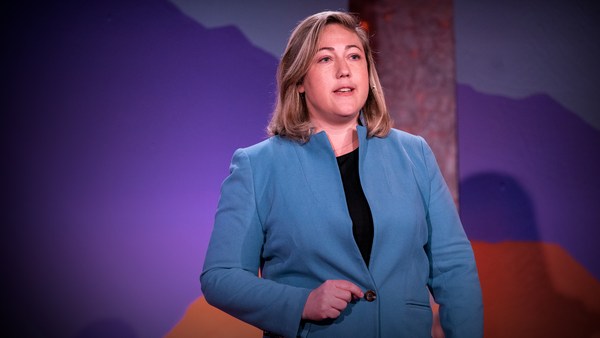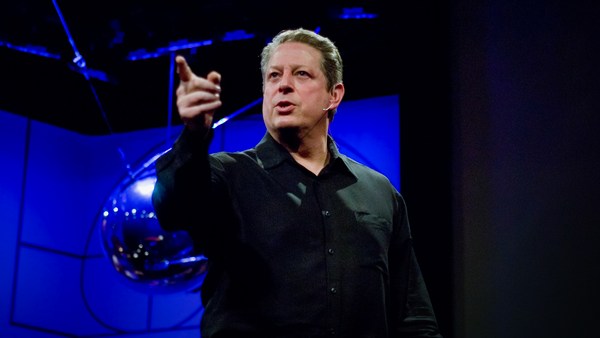I've worked in politics for over 20 years, and one of the biggest barriers we face when addressing the climate crisis is a lack of political will to enact all the climate solutions that we already have, whether it's energy permitting, pollution regulation, tax codes, building codes, you name it. The reason so little is getting done is often because it's easier to win elections by ignoring the climate crisis rather than addressing it.
In the United States, and that's my focus today, much of this is due to political spending by fossil fuel companies and other special interests. And currently there just aren't enough climate voters in the United States to overcome that spending and get politicians to do what science tells us is necessary. I believe, however, that we can overcome this problem and we can dramatically increase the number of climate voters, and that we can do so without having to convince millions of people to start caring about climate change. In fact, we may not even have to talk about climate at all.
The problem is this: we don't have enough climate voters in the United States, and that's largely because millions of environmentalists don't bother to vote. For instance, in the state of Georgia, 66 percent of registered voters voted in the 2020 presidential election. But according to voter models, only 58 percent of climate voters voted. That’s an eight percent undervote from people who care about climate change in a state where the election was only decided by 0.2 percentage points.
Another example. In Pennsylvania and Nevada, two crucially important swing states, people who skipped the last midterm election were twice as likely to list climate as a top priority as people who said they were going to vote in that election.
In short, the climate movement isn't voting, and this has a real impact on the electorate. When we look back at exit polling data from the 2020 presidential election, ultimately only four percent of voters listed climate change as their top priority. 2022 midterm polls showed the same thing, four percent.
And when so few voters prioritize climate change, two really important things start happening. First, it becomes incredibly hard to elect climate leaders. But second, even when climate leaders do win elections, it isn't like they can then just snap their fingers and get everything they want done. No, they still need to pick and choose what to spend their political capital on, and they ain't going to spend it on the thing that only four percent of voters list as a top priority.
And here's the final reason why this lack of voter demand for climate leadership is so problematic. Politicians know whether you vote or not. That's right. Who you vote for is secret. But whether you vote or not, in the United States, that's public record. And with limited time and limited money, the most important decision any political campaign makes is who to talk to and who to ignore. And when you literally have public voter files that tell you by name and street address, which people have a history of voting in the election you're trying to win, well, who do you think political campaigns talk to? Likely voters. And who do you think they poll to figure out what issues to prioritize? Likely voters. And the nonvoters? Well, they get ignored. And I know that sounds cynical, but let's be honest. Does Starbucks care about people who don't drink coffee? No. Does Toyota market cars to little kids who aren't old enough to drive? No. Companies market their products to people who are likely to buy them, and politicians market themselves to people who are likely to vote. And they literally know who those voters are by name and street address because it is public record.
Alright. So why is this relevant to the climate movement? Because remember, when we look at the people who are voting, very few of them list climate as their top priority. But when we look at the nonvoters, the people who campaigns typically ignore, well, it turns out that millions of them do care deeply about climate change. In fact, at the Environmental Voter Project, the nonprofit I founded, we estimate that as many as eight million climate-concerned Americans skipped the 2020 presidential election. Eight million. In an election where the Electoral College was decided by just 44,000 voters in three states.
In short, the climate movement isn't voting. And this is having a significant impact. We don't have a political persuasion problem. We have a voter turnout problem. And as frustrating as that is, I'd like to suggest to you that it's also an enormous opportunity because we live at a moment in time where it's become almost impossible to change people's opinions about anything, but especially climate change. Yet these millions of nonvoting environmentalists, they don't need their opinions changed. They just need their behavior nudged, so they start voting. And I won't claim that's easy. Of course it's not easy. But it is easier. And it is also testable. Because the existence of public voter files means that you can run messaging experiments, and then after the election, look up and see which ones actually got environmentalists to start voting.
And so that's the focus of our work at the Environmental Voter Project. We focus on identifying millions of nonvoting environmentalists, and then using nonpartisan messaging to turn them into new voters, and eventually consistent voters.
It's a three-step process. First, we need to find these nonvoting environmentalists. Now obviously, we can't interview every single American, but we can poll huge numbers of people, isolate the ones who list climate as their top priority, and then build highly accurate models to find other people like them.
Step two, we need to get them to start voting. And to do that, behavioral science tells us the best way to get an environmentalist to vote is not to talk about climate change. In fact, we shouldn't even try to convince them of the importance of voting. Instead, we should treat them as social animals who are trying to fit into societal norms, rather than as rational animals who need to be convinced of the value of their one vote. And so we use techniques like FOMO, fear of missing out, telling environmentalists that each year more and more of their peers are voting, so don't be left behind. Or we'll knock on their door, ask if they intend to vote. Most people will be embarrassed and they'll say yes, and then we'll follow up with them right before the election, remind them of that pledge, and equate the act of voting with whether they're an honest person who keeps their promises or not.
(Laughter)
We will even mail people copies of their personal voting histories.
(Audience) Oh, really?
NS: Yeah. Pretty aggressive, huh? Well, so is the climate crisis.
And this stuff works. These norm-based messages and other strategies have increased turnout among our target voters by as much as 1.8 percentage points in general elections, 3.6 percentage points in primaries and 5.7 percentage points in local elections. And those are huge numbers in this business. I mean, one or two percent is everything in politics.
And the final step is to build long-term voting habits. And to do that, you can't just talk to these environmentalists once every two years when there's a big federal election going on. No, we are active in over 250 elections each year, federal, state and local. Because, yes, voting can become habitual. And remember those public voter files? Well, they're not static. Once we get an environmentalist to vote, it almost immediately becomes public record, and then dozens of campaigns race to start talking to that environmentalist because they're now a voter. And they start getting polled, too, to figure out what issues they care about.
Ultimately, this is how we build an unstoppable bloc of climate voters that can move policymaking across the political spectrum. Because even in this hyperpartisan time, there is still one thing that unites all Democrats and Republicans. And that is, boy, do they all like winning elections.
(Laughter)
I mean, nothing motivates a politician more than the prospect of winning or losing an election. So they always go where the voters are. It's just the brutal arithmetic of how democracy works. Either you go where the votes are or you don't get to be a politician.
So now it's incumbent upon us in the climate movement to build this unstoppable bloc of climate voters. And it's increasingly clear that we can do so without having to convince millions of people to change their minds about climate change. In fact, we may not even need to talk about climate at all.
Thank you.
(Applause)





